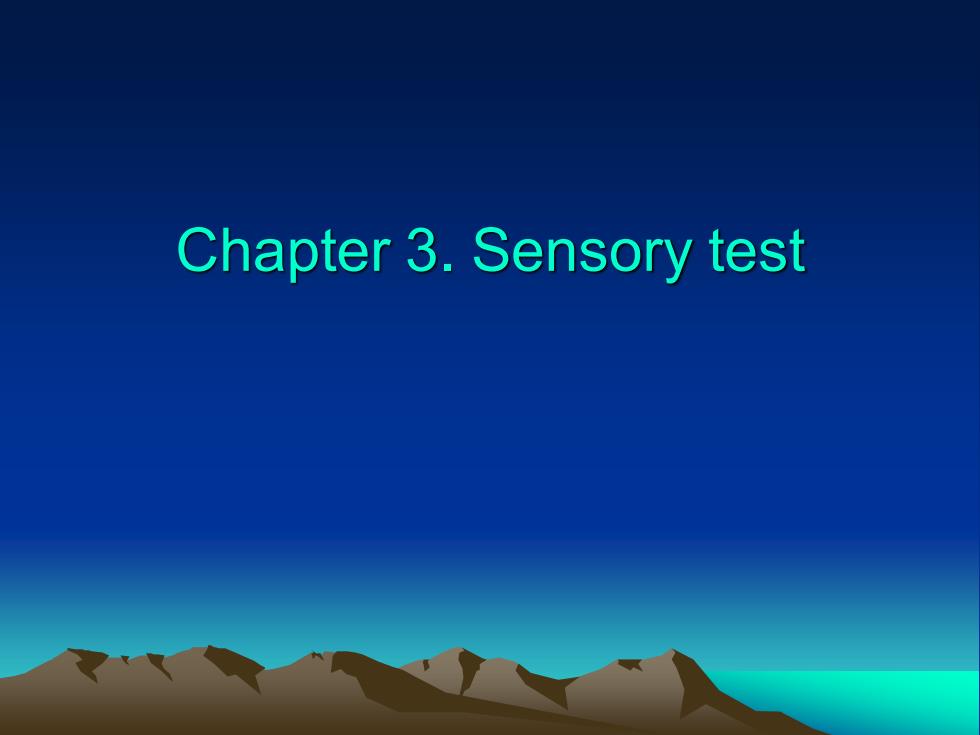
Chapter 3. Sensory test
Chapter 3. Sensory test
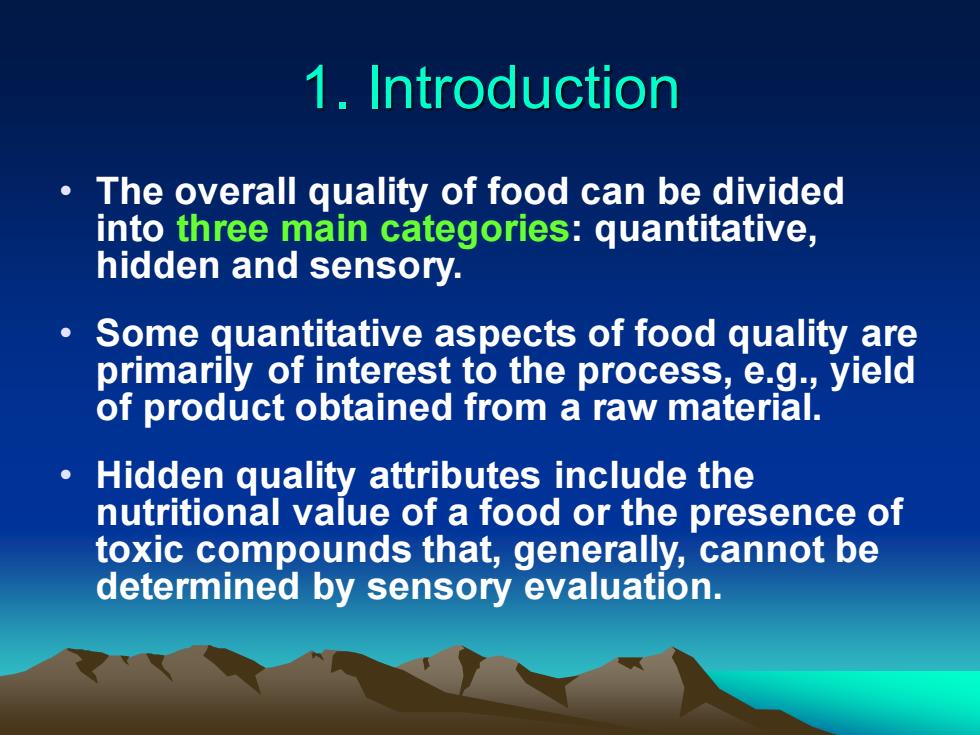
1. Introduction • The overall quality of food can be divided into three main categories: quantitative, hidden and sensory. • Some quantitative aspects of food quality are primarily of interest to the process, e.g., yield of product obtained from a raw material. • Hidden quality attributes include the nutritional value of a food or the presence of toxic compounds that, generally, cannot be determined by sensory evaluation
1. Introduction • The overall quality of food can be divided into three main categories: quantitative, hidden and sensory. • Some quantitative aspects of food quality are primarily of interest to the process, e.g., yield of product obtained from a raw material. • Hidden quality attributes include the nutritional value of a food or the presence of toxic compounds that, generally, cannot be determined by sensory evaluation
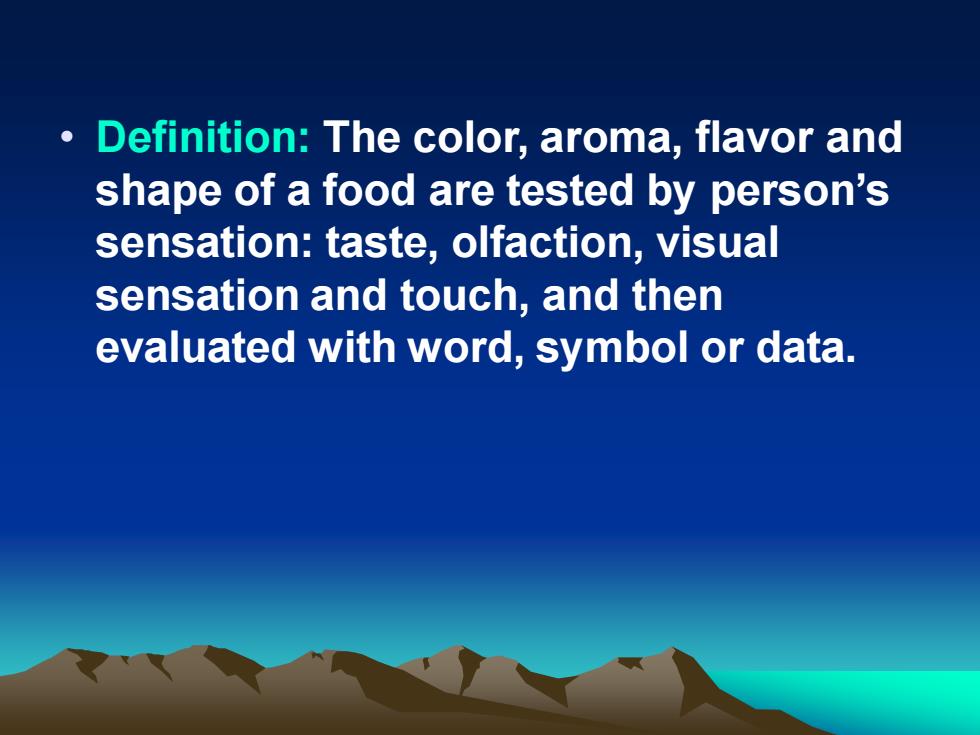
• Definition: The color, aroma, flavor and shape of a food are tested by person’s sensation: taste, olfaction, visual sensation and touch, and then evaluated with word, symbol or data
• Definition: The color, aroma, flavor and shape of a food are tested by person’s sensation: taste, olfaction, visual sensation and touch, and then evaluated with word, symbol or data
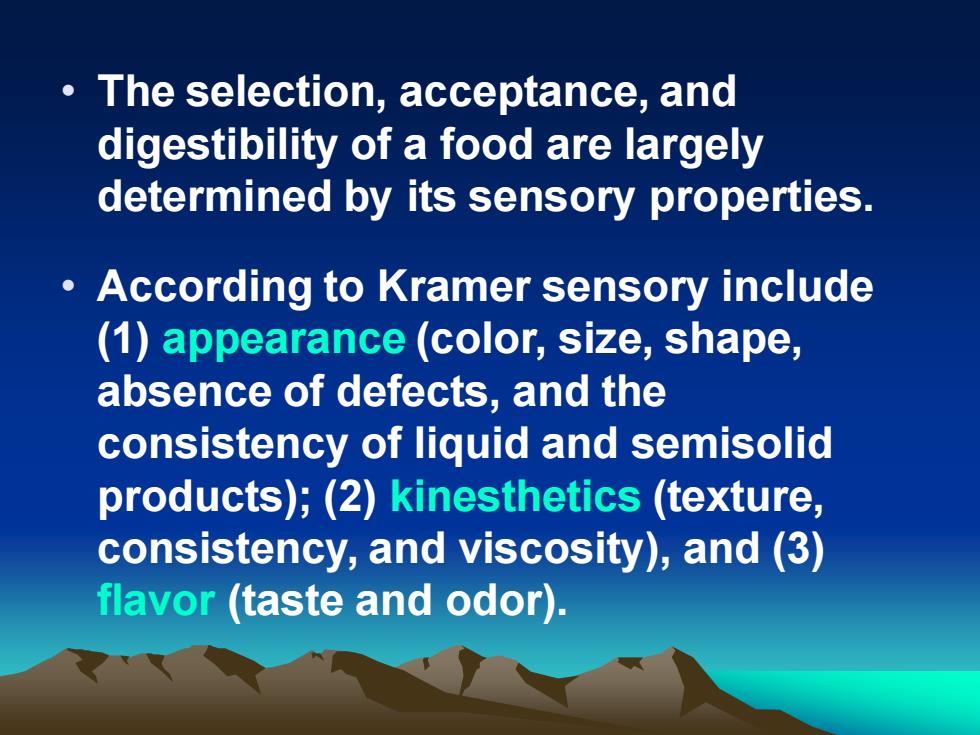
• The selection, acceptance, and digestibility of a food are largely determined by its sensory properties. • According to Kramer sensory include (1) appearance (color, size, shape, absence of defects, and the consistency of liquid and semisolid products); (2) kinesthetics (texture, consistency, and viscosity), and (3) flavor (taste and odor)
• The selection, acceptance, and digestibility of a food are largely determined by its sensory properties. • According to Kramer sensory include (1) appearance (color, size, shape, absence of defects, and the consistency of liquid and semisolid products); (2) kinesthetics (texture, consistency, and viscosity), and (3) flavor (taste and odor)
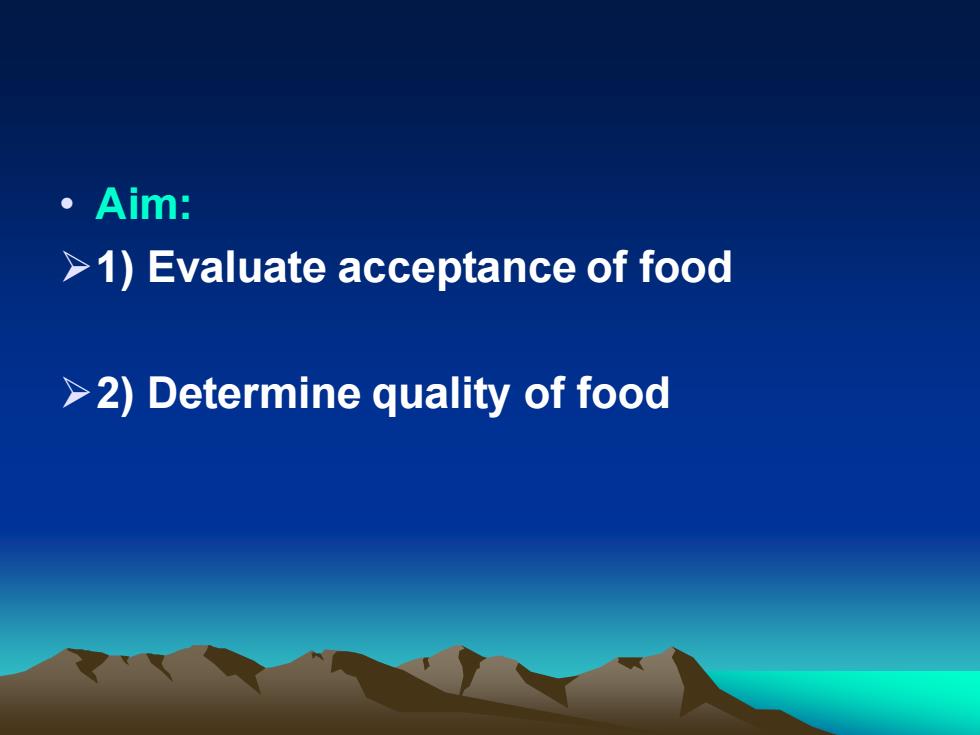
• Aim: ➢1) Evaluate acceptance of food ➢2) Determine quality of food
• Aim: ➢1) Evaluate acceptance of food ➢2) Determine quality of food

• Sensory evaluation have been widely used in examination of food quality, purchase of raw material, change of technical process, storage of food, R&D of new product, and market investigation
• Sensory evaluation have been widely used in examination of food quality, purchase of raw material, change of technical process, storage of food, R&D of new product, and market investigation

2. Category of sensory test • Visual sensation • Olfaction • Taste • Touch
2. Category of sensory test • Visual sensation • Olfaction • Taste • Touch
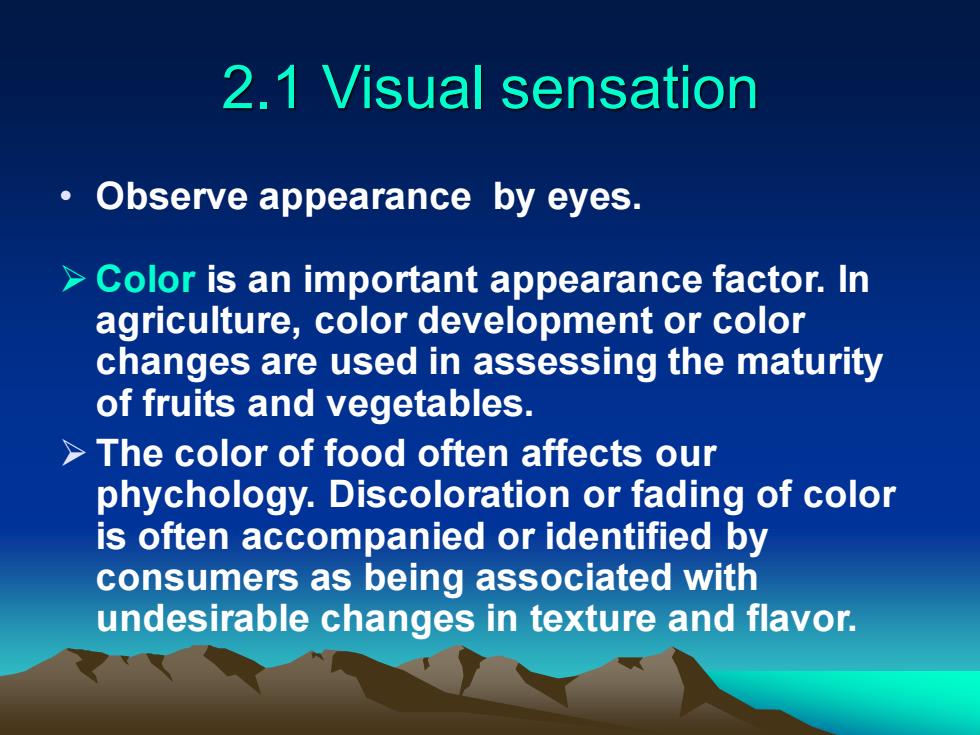
2.1 Visual sensation • Observe appearance by eyes. ➢ Color is an important appearance factor. In agriculture, color development or color changes are used in assessing the maturity of fruits and vegetables. ➢ The color of food often affects our phychology. Discoloration or fading of color is often accompanied or identified by consumers as being associated with undesirable changes in texture and flavor
2.1 Visual sensation • Observe appearance by eyes. ➢ Color is an important appearance factor. In agriculture, color development or color changes are used in assessing the maturity of fruits and vegetables. ➢ The color of food often affects our phychology. Discoloration or fading of color is often accompanied or identified by consumers as being associated with undesirable changes in texture and flavor

• Appearance characteristics of gloss, transparency and turbidity are often important
• Appearance characteristics of gloss, transparency and turbidity are often important

2.2 Olfaction • There is a number of relationship between food odor and its fresh degree, and processing manner. • Odor in foods is most commonly attributed to compounds containing sulfur, nitrogen, and certain halogens
2.2 Olfaction • There is a number of relationship between food odor and its fresh degree, and processing manner. • Odor in foods is most commonly attributed to compounds containing sulfur, nitrogen, and certain halogens